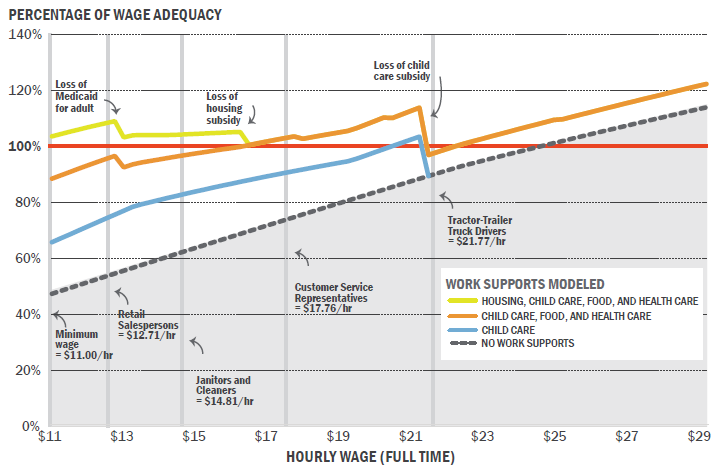A Message From Secretary Hunter
This week Governor Inslee announced Phase II of Washington’s child care pandemic support investments. We worked closely with the Legislature to agree on the structure of the changes, which include another $78 million on top of the $173 million invested in Phase I. The new investments include caps on co-pays to enable more families to afford care, grants to providers, and funding for the extra costs of full day instead of part day care when schools are operating remotely.
The Economics of Child Care
The child care system in Washington is pretty broken. It was broken before COVID, and the pandemic has only made it worse. The system is made up of thousands of mostly small businesses who offer care to children and families. You can get care in a child care center, in a family child care home, or care provided by family, friends or neighbors.
The first two categories (centers and family homes) are licensed, which means they have safety requirements and inspections. The staff have background checks. There are limits on the number of children per adult. Our formal family, friends and neighbor providers also have health and safety requirements, including background checks. Some providers are legally exempt from licensing – these are typically pre-school programs that run for less than four hours a day. Some are just unlicensed, which means none of the safety stuff you’d expect. You wouldn’t want to eat in a restaurant that’s not inspected by the health department, and you should worry even more about leaving your kid somewhere with no safety checks.
Unfortunately, most parents can’t afford safe, high-quality, licensed care: the fundamental economics of the business make it too expensive for new parents to afford. The main cost driver for a child care provider is the cost of staff. The ratio – the number of kids per adult – is pretty standard nationally. It’s one adult per 10 three-year-olds, for example. Infant care is even more expensive – you have to divide the cost of an adult across only four infants, as more than that is dangerous. In markets with expensive real estate that’s also a big cost; hello King County. It’s cheaper in some states because they have a minimum wage of half of Washington’s. Fixing the system by paying teachers even less is a dreadful idea.
There are about 85,000 kids in every age cohort. Only about half the of kids in households where all the adults work are in licensed childcare. The rest of them are getting care somewhere, but we don’t know where. Grandparents or other informal arrangements account for some of this, but we remain concerned about the number in potentially sketchy setups.
Washington State provides tuition assistance to low income families. In theory this goes up to people making 200% of the federal poverty level, or about $43,000 for a family of three. In reality, few families making more than about $30,000 for a family of three use the subsidy because the required co-pay increases 50 cents for every dollar of gross income. This creates a “benefit cliff” that stalls people in their careers and makes it almost impossible to get out of poverty. The average cost of a year of child care is $12,000. Much more for infants, and in many markets it’s a lot more than this. If you make $40,000 and have two kids that need care it’s almost not worth working. Of course, you do have to work to eat, so we hear parents saying that they can’t afford to work, but they also can’t afford not to work.

Impacts of the COVID-19 Pandemic
When the pandemic really hit in March we become very concerned about the survival of the child care system. We also worried about ensuring that critical healthcare workers had care if Washington had the same kind of hospital overload that New York had. During the initial stages many child care providers stayed open and stepped up to help out essential workers needing care. We thank them, parents thank them, people who buy groceries thank them.
With schools shut down, many parents needed to shift to full-day care, but many others kept their kids at home, either because they weren’t working, were working at home or were just reasonably cautious about group settings. Most providers were seeing about 40% attendance in this time frame. At this rate they might be able to pay staff or pay rent, but they certainly couldn’t do both.
With most schools starting the Fall in distance learning, and some now moving to hybrid models, many families still need access to full time child care. Prior to the pandemic there were 640,821 total children age 5-12 (“school age”) of which about 68%, or 432,000, that had all parents in the household working. Given the increase in unemployment, we estimate that total number has decreased from 432,000 to about 385,000 school age children who have all available parents working.
Some of them already had child care set up, and many are covered by parents working at home, grandparents, or other arrangements. To handle this surge of demand, we estimate that Washington would need about 100,000 more school age slots than the 60,000 we had before the pandemic, or almost a tripling of capacity. This isn’t going to happen given the current economics of the business.
In addition, the increased cost of care or the need to find care was unanticipated for families and enormously unaffordable for most.
Supporting the System in the Pandemic
We took a number of steps in March and April to stabilize the market and ensure that hospitals had enough staff who could go to work and know their kids were safe.
- DCYF sent out $29 million in one-time sustainability grants to help providers deal with the costs of COVID; stuff like protective equipment, cleaning supplies, etc.
- Shifted all the half-day subsidy authorizations to full day automatically, at a cost of almost $15 million. The schools were closed and we didn’t want parents or providers to have to individually apply for the increase that they clearly needed.
- Waived co-pays for parents from April-June. Many families were in chaos with the pandemic and we wanted to make sure kids were in a safe place, particularly if their parent had to be out looking for work. $10.2 million.
- Because of our concern about half-empty centers and family home providers, we shifted to paying for the full month, even if families didn’t necessarily attend. Normally the state would have saved $88 million in lowered usage, but the entire system would have gone broke and there wouldn’t be a childcare industry today. Note that this is how normal people pay for childcare – you pay for the month regardless of your attendance.
- Increased rates paid to providers taking subsidized kids by about 15%, for a total of $31.9 million. We have to make sure the state is paying the real cost of providing care, or the voucher is a cruel illusion, as nobody will take it.
To help providers who wanted to stand up extra childcare quickly we created an expedited licensing process, we streamlined background checks when most of the fingerprint providers were closed, and had an emergency waiver process on rules.
This week Governor Inslee is announcing phase II of our childcare support program. This includes:
- Another $30 million round of grants to licensed childcare providers to help with COVID-19 costs and stabilize the system. Formal family, friends and neighbor providers will receive some funding as well.
- Waiving co-pays for families from October 1 through the end of the year, and capping them at $115 a month until June of 2021.
- Funding for increased costs for full-day care while schools are in distance learning or hybrid models.
- Extra support for families caring for foster children to ensure they can manage dealing with the school and childcare impacts of the pandemic.
Our current estimates for the cost of this phase of the support program is about $78 million, and we want to thank Governor Inslee and the Legislature for agreeing to this expenditure to support families with kids, the childcare system, and the economy.

The Future of Child Care
Our economy cannot recover until people feel their kids are in a safe, high-quality setting when they can’t be there to care for them themselves. We also can’t have a system that depends on teachers willing to work for close to minimum wage, providers on the brink of bankruptcy all the time and months-long wait lists for safe, affordable infant care.
As the Legislature convenes this year they’ll need to take this system up. Washington families and the businesses that need a workforce agree that we need:
- Rates that cover the costs of providing care, including salaries that enable teachers to make enough to stay in the profession. Turnover rates in child care settings are concerning, limiting our ability to ensure quality care.
- To simplify the subsidy system. Eligibility for subsidy is a Kafkaesque dance based on often racist assumptions dating from the 90s.
- An end the “benefit cliff”, where parents can’t accept raises or promotions because they’ll lose their childcare benefits all at once. The capped co-pay is a start, but a better policy would be to assume a standard percentage of family income as the family’s contribution. Some national research suggests this should be in the 7-10% range.
There are some back-end improvements the state needs to make to administer the system, but the main cost is ensuring that kids who are in families where all of the adults are working, going to school, or looking for work have access to safe, high-quality care.

